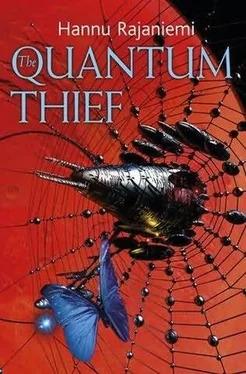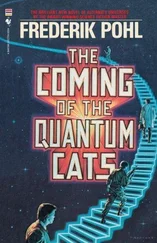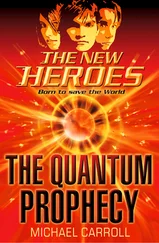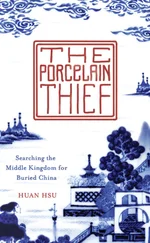The man considers it for a moment. ‘Can’t say I have. But this looks like something that old Antonia would have made, two streets down. Tell her Justin sent you.’ He winks at Isidore.
‘Thank you again,’ Isidore says. ‘You have been a big help.’
‘Don’t mention it. It’s difficult to meet young people who appreciate Watches these days.’ He grins, putting his gloveless hand on Isidore’s thigh. ‘Although if you really want to show your appreciation, I’m sure there’s something we can come up with-’
Isidore flees. As he hurries down the street, the roar of the music starts again, mixed with laughter.
‘Yes, I remember this,’ says Antonia. She is not old at all, at least not in appearance: in her third or fourth body, perhaps, a petite dark-skinned woman with Indian features. Her shop is bright and orderly, with Xanthean designer jewellery displayed alongside the timepieces. She immediately printed out a tempmatter instantiation of the co-memory, weighing it in her hands, tapping it with a bright red fingernail.
‘It would have been years ago,’ she says, ‘twenty Earth years maybe, judging by the design. The customer wanted a special little mechanism, you could hide something inside it and open it by pressing a combination of letters. A gift to a lover, probably.’
‘Do you, by any chance, remember anything about the person who bought it?’ Isidore asks.
The woman shakes her head.
‘It’s shop gevulot, you know – we rarely get to keep that sort of thing. I’m afraid not. People tend to be very private about their Watches.’ She frowns. ‘However – I’m pretty sure there was a whole series of these. Nine of them. Very similar designs, all for the same customer. I can give you the schematics, if you like.’
‘That would be wonderful,’ Isidore says. Antonia nods, and suddenly his head is full of complex mechanical and quantum computing design diagrams, along with another headache jolt. As he blinks at the pain, Antonia smiles at him. ‘I hope Justin did not scare you,’ she says. ‘This is a lonely profession – long hours, not much appreciation – sometimes he gets a little carried away, especially with young men like you.’
‘Sounds like being a detective,’ Isidore says.
Isidore has lunch at a small floating restaurant in Mont-golfiersville and gathers his thoughts. Even here, he is recognised – apparently his involvement in Unruh’s carpe diem party has been prominently reported by the Herald – but he is too preoccupied with the Watches to hide from every curious glance with gevulot. Hardly tasting his pumpkin quiche, he goes through the designs in his mind.
They are all identical, except for the engravings. Bonitas. Magnitudo. Eternitas. Potestas. Sapientia. Voluntas. Virtus. Veritas. Gloria . Goodness, Greatness, Eternity, Power, Wisdom, Will, Virtue, Truth, Glory. None of them qualities he would immediately associate with Jean le Flambeur. But they do suggest that the Unruh affair was not some random impulse to play games with Oubliette barbarians, as the millenniaire suspected. Clearly, le Flambeur has some connection to Mars, one stretching back twenty years at least.
Drinking coffee and looking at the view of the city below, he spends an hour ’blinking at the words. In combination, they appear in medieval texts, Raymond Lull’s Dignities of God from the 13th century, with some connections to the sephiroths of Kabbalistic tradition and the lost art of… memory. One of Lull’s followers was Giordano Bruno, who perfected the art of memory palaces, of storing mental images in physical locations, as if outside the mind. That, at least, is a connection that resonates. The Oubliette exomemory does the same thing, stores everything thought, experienced and sensed in a location in the ubiquitous computing machinery around it.
The shape of it feels right, but he is not sure if it is just pattern matching, like seeing faces in the clouds. Then the memory fragment about the architectural drawings comes back.
Another ’blink – looking for memory palaces – reveals that there was a series of architectural pieces commissioned by the Voice twenty years ago. Nine reflections on memory , by an architect called Paul Sernine.
All the palaces are located in the Maze, relatively close to each other, but the public exomemories about them are old, and Isidore is forced to do some footwork to find them.
The first piece he comes across is near a Maze marketplace, squeezed between a synagogue and a small public fabber centre. It is completely bizarre. The size of a small house, it is made from some black, smooth material. It consists of geometric surfaces, planes, cubes, stuck together in a seemingly haphazard fashion: still, he can sense that there is some order to its structure. And the surfaces do form spaces resembling rooms and hallways, only oddly distorted as if by a funhouse mirror. A plaque near what could be called an entrance has a small plaque that says Eternitas .
The structure looks like something designed by an algorithmic process, rather than a human being. And parts of it look fuzzy, as if the surfaces continued to fork and divide fractally beyond the human range of vision. On the whole, it looks rather forbidding. Someone local has made the black interior slightly less sinister and tomblike by placing a few flower-pots inside: vines have grown to curl around the jutting spikes and surfaces to find light.
There is a little local exomemory that opens up while Isidore studies the structure. It describes Eternitas as an ‘experiment in transforming exomemory data directly into architecture and livable spaces.’ The Oubliette is full of similar art projects – indeed, many of Isidore’s fellow students work on considerably stranger things – but clearly there is something deeper here, something that is or has been important to the thief.
On impulse, he takes out his magnifying glass. He gasps. When he zooms in, the surface reveals immense complexity, black leaves and spikes and pyramids, whole architectures with alarming regularity that go all the way down to the molecular level. And the material is something the glass does not even recognise, something resembling what it calls zoku q-matter, but denser: in spite of its relatively small size, the structure must be immensely heavy. Underneath, it looks less like a piece of architecture than a part of some unimaginably complex machine, frozen in time.
And there are nine of these? Isidore takes a deep breath. Maybe I really am out of my depth .
*
Deep in thought, he starts walking towards the next Reflection piece, only a few hundred metres away, trusting his sense of direction to guide him through the Maze.
How is all this related to Unruh? he thinks. Time , memory castles, Dignities of God? Maybe it doesn’t make sense: maybe le Flambeur is insane . But his every instinct tells him there is a logic here; that everything so far is a sliver of some larger iceberg.
He jumps at a sudden noise. There is the silhouette of a parkrouller on a nearby rooftop. This is one of the parts of the Maze where construction was started and then stopped when the drifting of the city platforms moved it to an unfavourable position: everything here is half-finished and deserted. The buildings lining the narrow streets look like decayed teeth. As he watches, the parkrouller disappears, becoming a gevulot blur. He quickens his pace and keeps walking.
After a minute, he hears the footsteps, following him. At first, he thinks the sound belongs to one person. But when he stops to listen, it is clear from their echo that there are several followers, marching in perfect synchrony, like soldiers. He walks briskly and turns away from the main street, into a small alley, only to see the slow drift of the Maze close the other end and turn it into a dead end. When he turns around, he sees the four Sebastians.
Читать дальше












